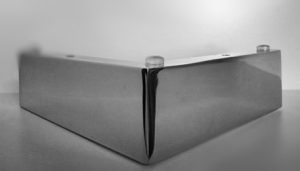Quality Furniture Legs
December 9, 2013
Modern furniture varies in quality from practically disposable to heirloom class. The materials and care the furniture requires and its overall quality is pretty directly related to the materials used to build the piece. Below, we will look at the three most common materials for furniture legs and the care required to keep them looking their best.
Plastic
Plastic furniture legs almost invariably indicate that furniture is at the bottom end of the quality spectrum. Because it is a cheap material that is very easy to shape, plastic furniture components can be sold for far less than those made from other materials. On the plus side, plastic is all but immune to moisture and any life forms that try to infest furniture. Cleaning the furniture is also quite easy as the plastic is also resistant to corrosive elements found in general cleaners.
The big drawback to plastic is that it is virtually impossible to repair. A deep scratch on a plastic component will probably be there forever. Likewise, color fading from sunlight is not something that can usually be reversed.
Metal
Depending on the precise metal and finish used, metal furniture legs can be found on anything from bargain pieces to top end furniture. Like plastic, it does not suffer from infestations of living creatures, but it can be vulnerable to corrosion or oxidation.
Cleaning of non-corrosive metal components can be done with soapy water or a mild general cleaner. Corrosive metals should not really be cleaned, but should be buffed briskly instead. Painted metals can be touched up when scratched, but a dent is likely an eternal feature of the piece. Whether scratches can be buffed out of a piece of metal is completely dependent on the depth of the scratch, the exact metal used and the finish of the component.
Wood
Wood is generally considered the top end construction material for quality furniture legs. Keep in mind, this is wood – as in, a solid piece; not a composite of wood scraps. It usually feels the most solid of all three materials and dents and dings only add character. As a cost, though, wood requires more maintenance than the other materials.
First, any exposed wood should be dusted regularly. Allowed to collect, dust can actually act as an abrasive so that any contact with the wood acts in a fashion similar to sandpaper. Except for spot cleaning a stain or spill, wood should never really be cleaned. An oil polish used regularly will keep it looking great while making it last longer by adding moisture and helping repel living creatures that may be looking for a home.
